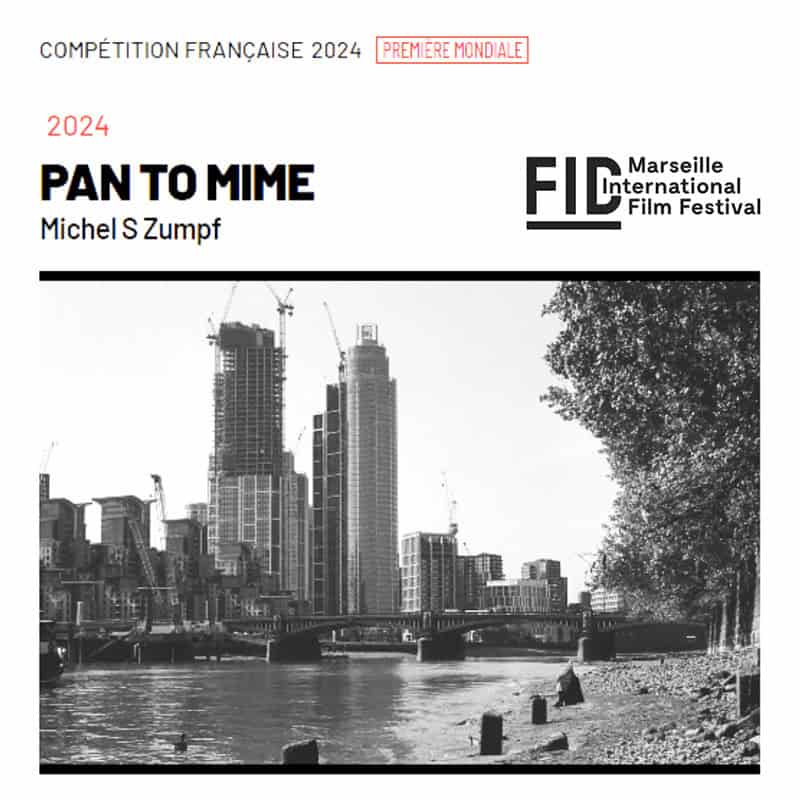
Michel S Zumpf’s film ‘Pan To Mime’ is in competition as part of the FIDMarseille 2024 festival. The cast includes François Morel, Jean-François Balmer, France Cartigny, Audrey Bonnet, Maxence Tual, Tugba Sunguroglu, Charlotte Rançon, Sandrine Dumas, Estela Basso, Andrea Susac, Suzanne Caye, Paul-Alexandre Dubois, Laura Müller. And the soundtrack includes contributions by Angèle David-Guillou, Agathe Max, Ela Orleans, Stephanos Thomopoulos, Patrick Higgins, Takumi Akaishi, Hélène Breschand, Susan Alcorn, Loup Uberto, Laura Müller, Matteo Cesari… and also my very own music.
Here’s a superb introduction by Cyril Neyrat:
“Pantomime: A show in which the artist uses only gestures, funny faces and attitudes to communicate.” Admittedly, Pierrot, the patron saint of mimes, is the main character in Michel Zumpf’s latest film. But if the filmmaker goes to the trouble of breaking down the word to form the title, it is to broaden its scope. PAN TO MIME. So it’s up to us. We can pronounce it in the English way, because the film travels back and forth across the Channel, between the rooftops of Paris and the banks of the Thames, between the music of both languages, and with beloved writers Verlaine and Laforgue, Chesterton and Dickinson. But eventually, we must return to ancient Greek, to the etymology of the word: imitation of everything. This has been the filmmaker’s plan since Le Géographe Manuel (1996), and here he takes it to a new level of sophistication, grace and musicality: to make poetry out of everything. Michel Zumpf’s work is fueled by an extraordinary curiosity, an unquenchable thirst for finding beauty and remarkable features, everywhere, in everything. A curiosity intensified by a collector’s passion. PAN TO MIME is the reordered disorder – through the genius of editing – of a series of collections: of places, books, words, objects, musical instruments, languages (English and French, but also Russian, Italian, Japanese, etc.). Not to mention the real meat of the film, the collection of a whole community of living beings: animals, men and women of all ages, renowned actors and musicians, donkey or pig farmers, whose lovingly-filmed bodies and faces impress the 35mm film with their singular vitality. Words and things of the past, ruins of the Pathé factories or the Saint Pol Roux manor; landscapes and faces of today. They are all tuned in the same time, the time of the film, its music and rhythm, abolishing all others. If silent film resurrected the forgotten art of pantomime, then Zumpf’s talking film unearths and fulfills another promise from the 19th century – that of Baudelaire, of poetic modernity as synesthetic experiences and elevation: to grant eternity to all that passes, and to wrest the century from the century itself.”